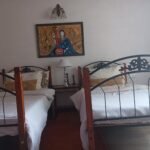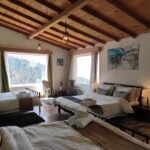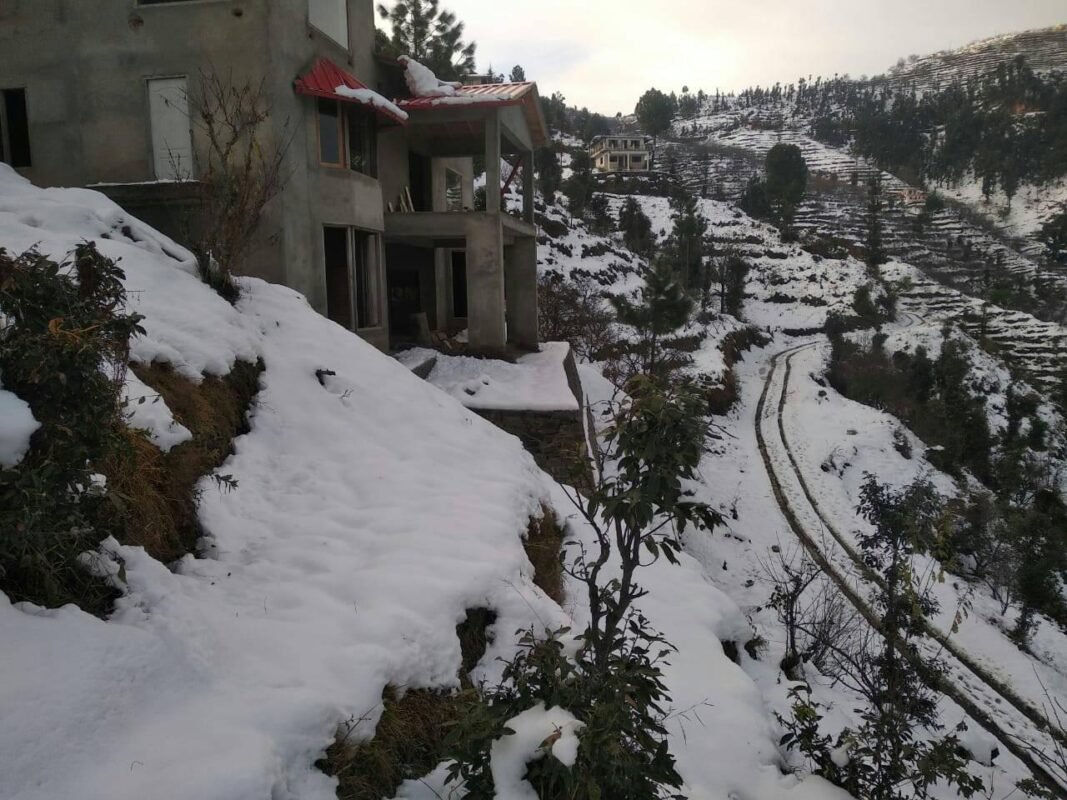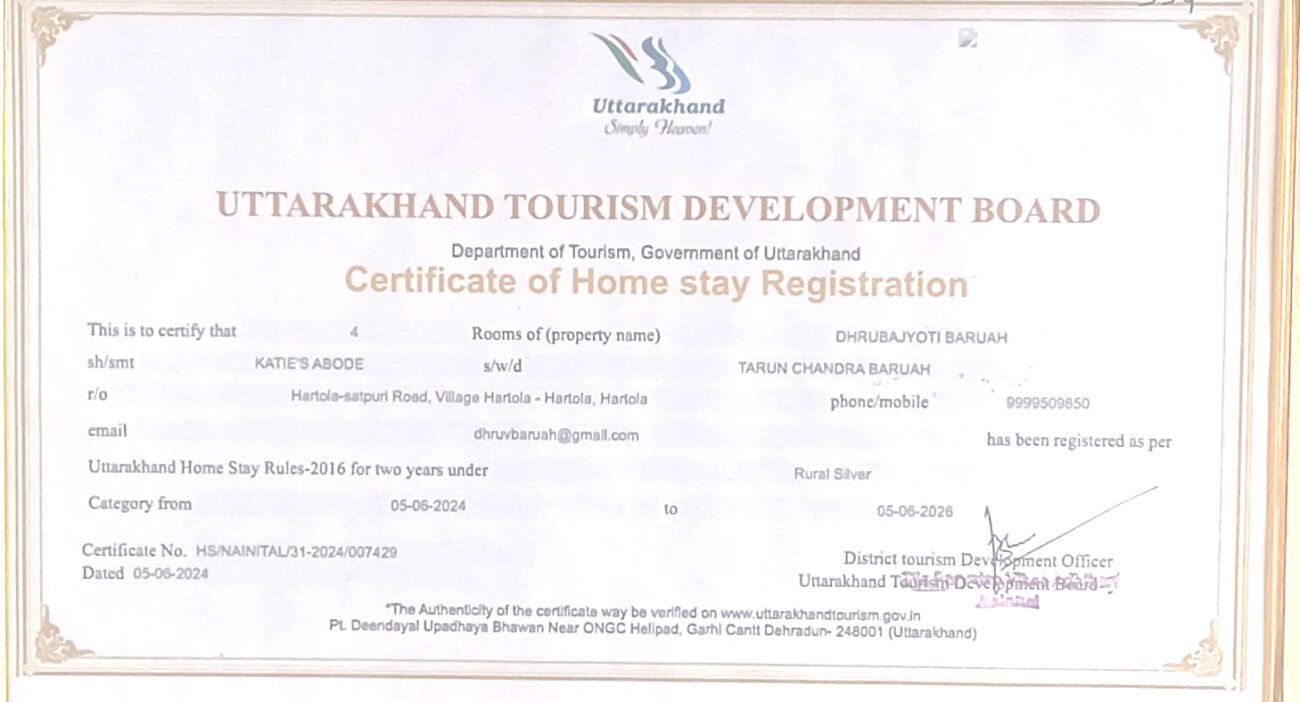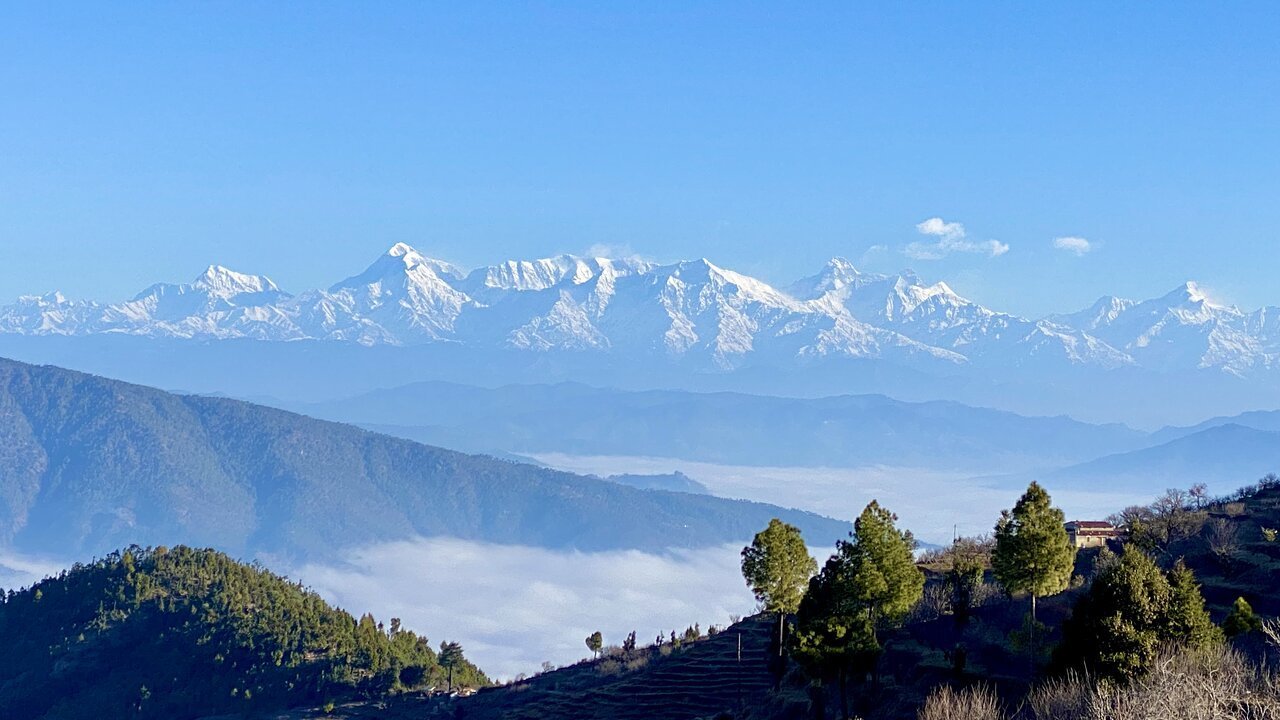Hartola is a sleepy little hamlet located in the Nainital district in the state of Uttarakhand in India. True to its name, the charm of this village lies in its hidden accessibility from regular run-of-the-mill tourist radar. It borrows its name from two words in Hindi Devanagri script – ‘Har’ + ‘Tola’. ‘Har’ means Lord Shiva (a revered Hindu God) and ‘tola’ means the locale where one of a kind dwell. Thus, ‘Hartola’ denotes the locale where Lord Shiva dwelled.
A quaint and ancient Shiva temple up in the mountain here lends credence to this meaning. The sound of bells from this temple at a distance, coupled with the chirping of mountain birds, is music to one’s ears while the eyes feast on a panoramic view of the Himalayan peaks. The view from Hartola rivals that from Mukhteshwar, a small mountain village that was developed with some infrastructure by the British. This is because Hartola, also atop a mountain ridge, has a closer view of the Indian and Nepal range of the Himalayas when compared to Mukhteshwar.
Population and demography of Hartola:
As per the last Population Census 2011, a total 130 families reside in Hartola and has a population of 668 of which 355 are males while 313 are females. Children in the age group 0-6 is 80 which makes up 11.98% of total population of village. The average sex ratio of Hartola village is 882 and the child sex ratio as per the last census is 1105, which is higher than Uttarakhand average of 890.
At 82.82% Hartola has a higher literacy rate compared to that of the state with was compared to the 78.82% of Uttarakhand. Male literacy stands at 91.48% while female literacy rate was 72.69%.
Places to stay in Hartola:
- Buransh – single occupancy
- Padam – family room
- Kafal – double room
History of Hartola:
The Kumaon region, which houses the district of Nainital, was under the rule of the Gorkhas before the Chand dynasty. The area of Hartola was owned by some members of the Rana dynasty, which ruled the Kingdom of Nepal from 1846 AD until 1951 AD. The name of the Queen who held Hartola as her estate was Rani Prem Pal. While relocating to Nepal, Rani Prem Pal ‘gave away’ this property to loyalists of her family who had helped her maintain the estate and the Shiva temple. What followed later was a legal battle in the High Court of Nainital between the descendants of the Queen, who were the owners, and the families who had received her estate.
The ‘gift’ was upheld by the High Court as an instrument of exchange and the descendants of the victorious family now owns one of the most enviable apple orchards, in terms of its flat setting on top of the mountain, facing the majestic Himalayas. From the centre of the 180 degrees, one can view the snow-clad Nandadevi and Trishul peaks.
Folklore/myth:
Folklore has it that during the British period in India, a shepherd boy from Almora, who went grazing his cattle in the meadows, accidentally discovered a picture perfect and serene hamlet that spread in a radius of barely six kilometers. While he set his cattle free to graze in the green meadows and took his afternoon siesta, the young shepherd boy witnessed the appearance of Lord Shiva in his dream.
Fruit orchards and farming:
Hartola is home to organic orchards of apple, plum, peach, apricot and now also walnut. Although the quality of apple is not as good as that of Kashmir and Himachal Pradesh, nevertheless it still is sought-after to make jams, etc.
Farmers here also cultivate seasonal crops including a variety of vegetables, pulses and herbs. Commercial farming of vegetables is done in small scale by farmers and the produce is sold in nearby cities. Hartola is known for its good variety of rajma (kidney beans) although it is mostly consumed by the farmers.
Hartola sits at a geographical altitude of around 8345 feet, making it an ideal fruit-laden destination for prospective home-buyers, tourists, bird-watchers and orchard lovers. A new link road through village Lahauli will link Hartola to Almora and Ranikhet vide a shorter route than the present detour through Ramgarh. This route will turn this beautiful hamlet into a major tourist destination, which had in the past remained a poor cousin of Mukhteshwar – despite offering spectacular views of the Himalayan range.
Nearby places:
Hartola is situated at a distance of 54 kilometers from Nainital, while Nathuakhan which is the nearest market is 10 kilometers away. The village is in close proximity to the Mukteshwar forest reserve, which has the largest population of Banjh (Himalayan oak) along with Burash, Deodaar trees and various Himalayan flora & fauna. Located at a distance of 342 kms by road from Delhi, capital city of India, the nearest rail-head is Kathgodam (70 kms) from where a taxi takes two-and-a-half hours to reach Hartola.
Second homes:
Owing to its scenic beauty, Hartola today sees a large floating population of holiday home owners mostly during the summer months. The village is dotted with second homes of owners from various cities like Delhi/NCR, Lucknow, Chandigarh, etc. During the summer season, when scorching heat beats the plains, the village witnesses a substantial number of people coming to Hartola to enjoy the cool climes.
Also cheaper land prices compared to Mukteshwar make Hartola an attractive option for holiday home buyers. The hamlet in the past few years have seen almost doubling of second homes being constructed.
Tourists:
There are no hotels in Hartola, but a handful of homestays cater to the ever-increasing tourists wanting to escape the done-to-death tourist destinations like Mukteshwar, Ramgarh and Nainital. Owing to Hartola’s rich flora and fauna, bird lovers frequent the place wanting to get a glimpse of the 100-plus birds living in the area.
Amenities:
Hartola has a primary and secondary school. However the long-standing demand for a higher secondary school/college has not been met till date. As far as road connectivity is concerned, except for the main road connecting Hartola from Nathuakhan that ends at Tarikhet, the arterial roads are still non-metaled despite several pleas of the locals before the government. The condition of these roads becomes bad during the monsoons which adds to the plight of the farming locals who find transporting their produce very difficult. There are no hospitals in Hartola, the nearest being about 17 kms away. The village has a post office and its pin code is 263158. Water scarcity is a major issue in Hartola. Although government water connections are available for residents, complains of water not being supplied for months together is rampant among the local population.
Flora and fauna:
Hartola is located in the middle Himalayan ranges and thus rich in flora and fauna. The trees and bushes grown in the region include, but is not limited to: Quercus incana Oak (Banj), Juglans regia (Akhrot or walnut), Populus ciliata (Pipal), Fraxinus micrantha (Ash), Berberis asiatica (Kilmora), Cupressus torulosa (Surai), Rhododendron arboreum (Buranch), Cedrus deodara (Deodar), Salix acmophylla (Weeping Willow), and Pinus (Pine), Prunus cerasoides (Wild Himalayan Cherry or Padam), etc.
The dense forest around Oak Chalet is home to wild cats such as the elusive Himalayan leopard, macaques, langur monkeys, the sambur and karker deer, wild boar, porcupines, pine martens, and various mountain birds including chakors, magpies, mynas, jungle fowl, babblers and whistling thrush.
The area around Hartola is home to more than hundreds of species such as Black Kite, Lammergeier, White-rumped Vulture, Himalayan Griffon, Eurasian Griffon, Cinereous Vulture, Crested Serpent Eagle, Common Buzzard, Golden Eagle, Thrush Trails, Pheasant Pursuit, Redstart, Wagtails, Brown Dipper, Great Barbet, etc. In fact, the entire area if included with Almora, Binsar and Mukteshwar, is considered as one of rich avifauna species habitat in Asia. The significant bird species in the forests outlining Hartola are forktails, woodpeckers, pheasant, partridges, redstart, flycatcher, barbets, laughing thrush, Tree-creepers, warblers, finch, tit, magpie, kingfishers, raptors, common green magpie, etc.
Commonly sighted birds on the forested area adjoining Hartola include, kalij-pheasant, cheer-pheasant, koklass-pheasant, hill-partridge, rufous-throated partridge, etc.
In addition to that the white-capped redstart, blue-capped redstart, oriental turtle dove, ultramarine flycatcher, rufous-bellied niltava, verditer flycatcher, rufous sibia,great barbet, streaked laughing thrush, white-throated laughing thrush, blue whistling thrush, scaly thrush, himalayan pied kingfisher, green backed tit, black-throated tit, breasted green finch, common rosefinch, grey slaty woodpecker, grey headed woodpecker, brown fronted woodpecker, and lesser yellow-naped woodpecker have also been sighted by ornithophiles over the years.
- With inputs from Wikipedia


